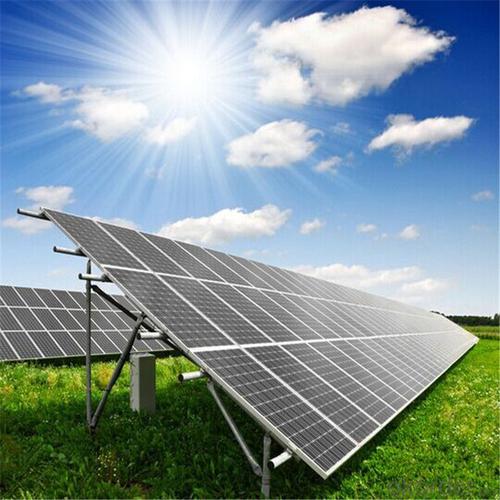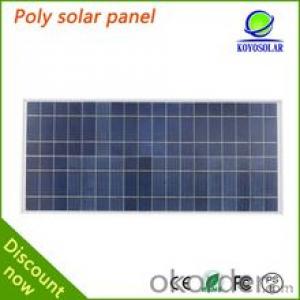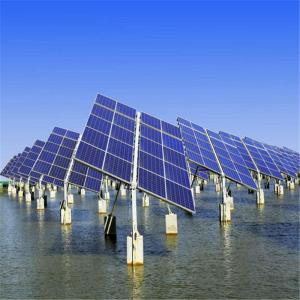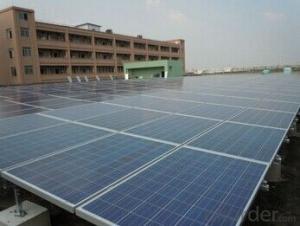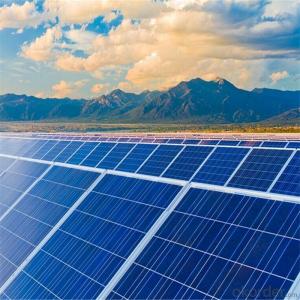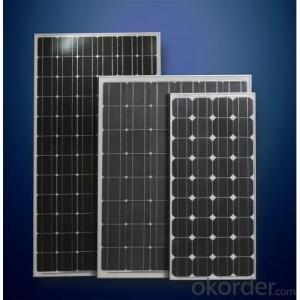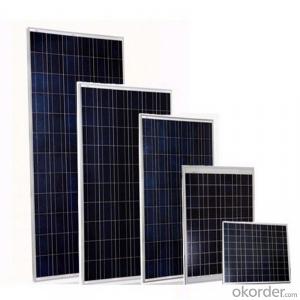Inexpensive Solar Cells:235 Watt Photovoltaic Poly Solar Panels
- Loading Port:
- China main port
- Payment Terms:
- TT OR LC
- Min Order Qty:
- 1000 watt
- Supply Capability:
- 500000 watt/month
OKorder Service Pledge
OKorder Financial Service
You Might Also Like
Specification
Instruction
Quality and Safety
1. Rigorous quality control meets the highest international standards.
2. High-transmissivity low-iron tempered glass, strong aluminium frame.
3. Using UV-resistant silicon.
4. IS09001/14001/CE/TUV/UL
5.3w-300w mono & poly solar panel supply
Warranties
1. 10 years limited product warranty
2. 15 years at 90% of the minimal rated power output
3. 25 years at 80% of the minimal rated power output
Feature
1. High efficiency and High power.
2. Long-term electrical stability.
3. Lowest price and Fastest delivery.
4. Good quality and good service.
5.Bulk supply
6. Good Warranty
7.Big Sale
8.High quality
9.More than 35 years on the lifetime.
10 DHL/Fedex/UPS/TNT/EMS etc
Images
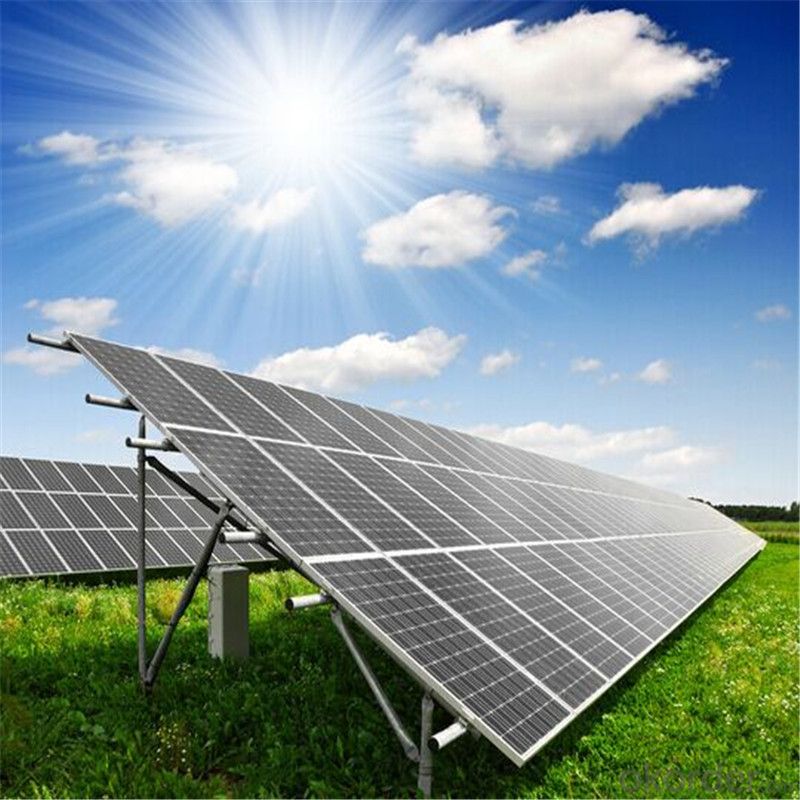
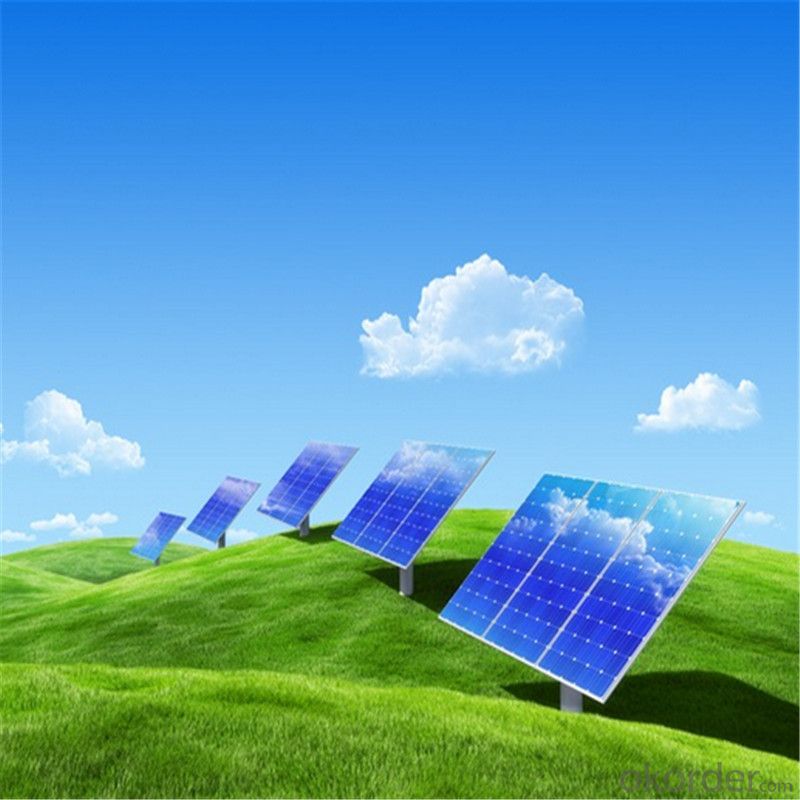
Specification
Model | SIM-100 |
Maximum Power at ST(Pmax)W | 100Wp |
Maximum Power Voltage(Vmp)V | 18.0V |
Maximum Power Current(Imp)A | 5.56A |
Open Circuit Voltage(Voc)V | 22.0V |
Short Circuit Current(Isc)A | 5.9A |
Cell Efficiency(%) | 17.0% |
Module Efficiency(%) | 15.37% |
Operating Temperature°C | -40°C to 85°C |
Maximum system voltage | 1000V(IEC)DC |
Power tolerance | -0.03 |
Temperature coefficients of Pmax | -0.45%/°C |
Temperature coefficients of Voc | -0.27%/°C |
Temperature coefficients of Isc | 0.05%/°C |
Weight(kg) | 7.4 |
Number of cell(pcs) | 4*9 |
FAQ
We have organized several common questions for our clients,may help you sincerely:
1). What’s price per watt?
A: It’s depends on the quantity, delivery date and payment terms of the order. We can talk further about the detail price issue. Our products is high quality with lower price level.
2). Can you tell me the parameter of your solar panels?
We have different series of cells with different power output, both from c-si to a-si. Please take our specification sheet for your reference.
3). How do you pack your products?
We have rich experience on how to pack the panels to make sure the safety on shipment when it arrives at the destination.
4). How long can we receive the product after purchase?
In the purchase of product within three working days, We will arrange the factory delivery as soon as possible. The perfect time of receiving is related to the state and position of customers. Commonly 7 to 10 working days can be served.
- Q: Can solar cells be used for water desalination?
- Yes, solar cells can be used for water desalination. Solar-powered desalination systems harness the energy from sunlight to convert seawater or brackish water into fresh water. This process is known as solar desalination and involves using solar panels to generate electricity, which in turn powers the desalination system. Solar desalination offers a sustainable and environmentally-friendly solution to address water scarcity in regions with abundant sunlight.
- Q: How do solar cells perform in areas with high levels of electromagnetic interference?
- Solar cells can be affected by high levels of electromagnetic interference (EMI), which can lead to reduced performance. EMI, such as radio frequency interference or electromagnetic radiation from nearby electronic devices, can disrupt the proper functioning of solar cells by interfering with their ability to convert sunlight into electricity. Therefore, in areas with high EMI levels, solar cells may experience decreased efficiency and output. Implementing shielding techniques and using quality components can help mitigate the impact of EMI on solar cell performance.
- Q: Are solar cells affected by electromagnetic radiation?
- Yes, solar cells are indeed affected by electromagnetic radiation. They are designed to convert sunlight, which is a form of electromagnetic radiation, into electricity.
- Q: Silicon solar cell power generation principle
- When the junction of two different materials formed by the light irradiation, the process of generating electromotive force.The process of the first material absorbs the energy of the photon, resulting in equal number of positive and negative charge, then these charges were migrated to both sides of the knot, The formation of even electricity layer. Although the effect is not generated instantaneous, but the response time is quite short.
- Q: Can solar cells be used to power large-scale industrial facilities?
- Yes, solar cells can indeed be used to power large-scale industrial facilities. With advancements in solar technology and the availability of more efficient and cost-effective solar panels, industrial facilities can harness the power of the sun to meet their energy needs. Large-scale solar installations, such as solar farms or rooftop arrays, can generate substantial amounts of electricity, making them a viable option for powering industrial operations. Additionally, integrating solar power into industrial facilities can reduce greenhouse gas emissions, lower energy costs, and provide a more sustainable and reliable energy source.
- Q: I am working on research for the usage of solar cells, where can I find more news of solar cells?
- You can visit the city library, where you can find a lot of books and newspapers talking about the solar cells.
- Q: Do solar cells work at night or in low light conditions?
- Solar cells do not work at night as they require sunlight to generate electricity. In low light conditions, their efficiency decreases significantly, but they can still produce some electricity, although at a much lower rate.
- Q: What factors affect the output of a solar cell?
- Several factors can affect the output of a solar cell. The most significant factors include the intensity and angle of sunlight, the temperature of the cell, the efficiency of the cell's materials (such as the type of semiconductor used), and any shading or obstructions that may limit the exposure of the cell to sunlight. Additionally, the condition and cleanliness of the cell's surface, as well as the overall design and quality of the solar cell system, can also impact its output.
- Q: Solar cells and the difference between ordinary batteries. Why is the solar cell is converted into electrical energy, zinc battery is what is converted into chemical energy
- The so-called chemical energy, in fact, is "chemical potential". Can be released through the oxidation-reduction reaction of energy, into other energy. This is the release of chemical energy.
- Q: Can solar cells be used for powering remote military installations?
- Yes, solar cells can be effectively used for powering remote military installations. Solar power offers a reliable and sustainable energy solution for such locations, reducing dependence on traditional fuel sources and minimizing logistical challenges. The advancements in solar technology have made it possible to generate sufficient power even in remote areas, ensuring continuous and independent energy supply for various military operations and equipment.
Send your message to us
Inexpensive Solar Cells:235 Watt Photovoltaic Poly Solar Panels
- Loading Port:
- China main port
- Payment Terms:
- TT OR LC
- Min Order Qty:
- 1000 watt
- Supply Capability:
- 500000 watt/month
OKorder Service Pledge
OKorder Financial Service
Similar products
Hot products
Hot Searches
Related keywords


